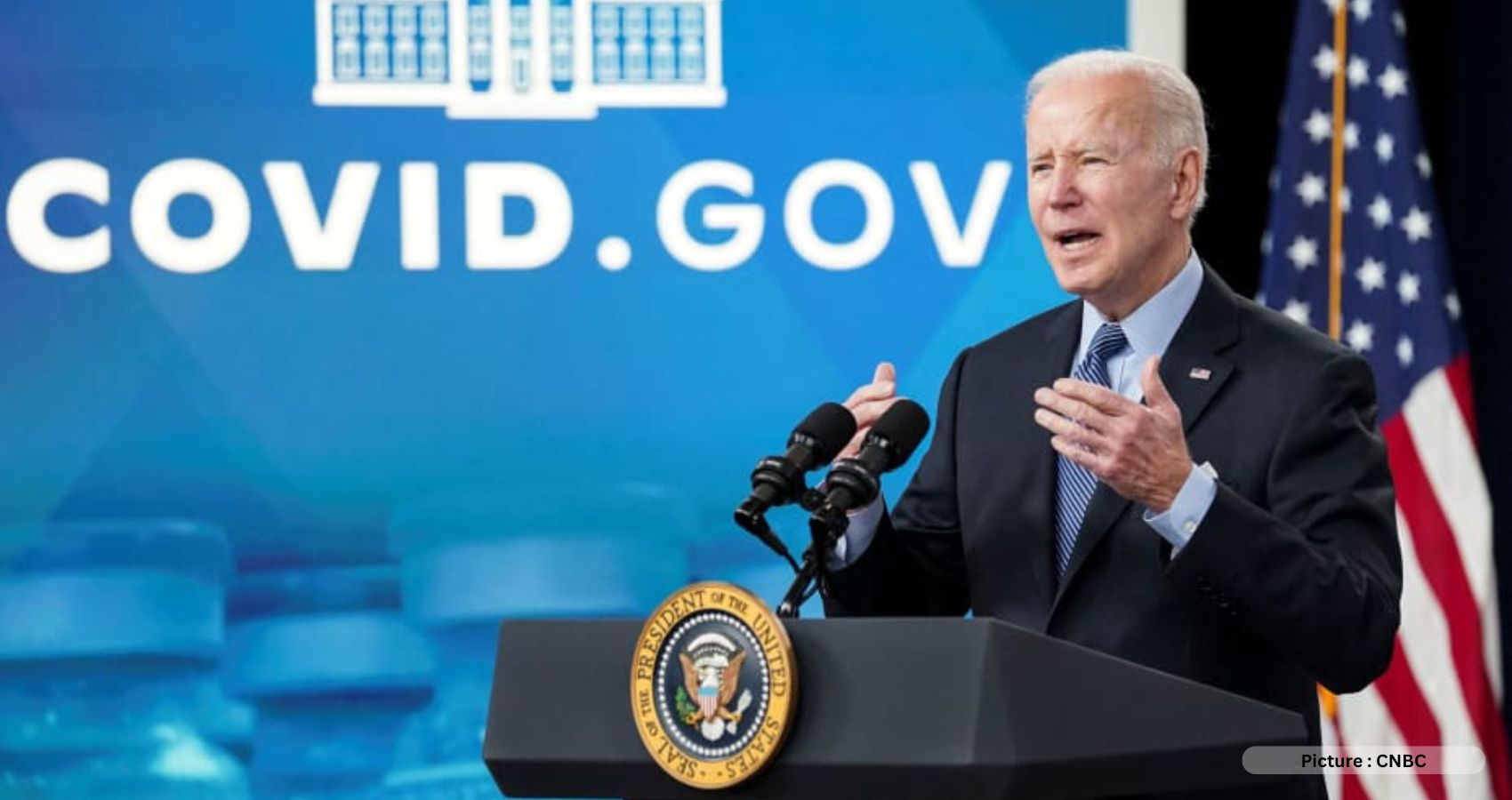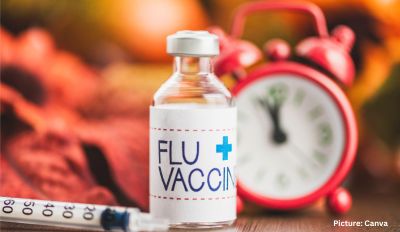The United States has designated May 11 as the date to end its public health emergency, which was declared in response to the pandemic caused by the SARS-CoV-2 virus. The declaration, which has been renewed 13 times, has given the US government wide-ranging flexibility in the fight against COVID-19. It has allowed for the implementation of certain policies and actions, such as a wider social safety net and free access for Americans to COVID-19 vaccines, tests, and treatments. However, as the pandemic situation improves, the US Centers for Disease Control and Prevention (CDC) will lose access to some data used to measure the severity of the pandemic and guide its public health recommendations.
Dr. Rochelle Walensky, CDC Director, said that at the end of the public health emergency, the CDC will have less access to data. “We will lose our percent positivity. We won’t get laboratory reporting. We won’t get case reporting. So we’ll lose some of that,” she said. Nevertheless, the CDC is “not changing the steam at which we are working through this resolving this public health emergency.” The agency will continue to closely monitor the virus around the country, using novel approaches like genomic sequencing and wastewater testing.
The expiration of the public health emergency declaration means an end to some programs and actions, while others will wind down slowly, and some will remain in place. The US Department of Health and Human Services announced the extension of the public health emergency for the last time, subsequently allowing it to expire. The decision means that the government will no longer have the wide-ranging flexibility it once had in the fight against the pandemic.
Despite the end of the public health emergency, many Americans remain concerned about the pandemic. Experts say people must remain vigilant in adhering to precautions, such as wearing masks and social distancing, to prevent a resurgence of COVID-19 infections. The CDC recommends that people continue to get vaccinated and follow its guidelines for preventing the spread of the virus.
The end of the US public health emergency does not mean the end of the pandemic. It marks a significant milestone in the fight against COVID-19, but precautions must still be taken to prevent the spread of the virus. As Dr. Walensky said, “We must remain vigilant. Nobody wants to see the patient readmitted to the hospital.”
As Covid-19 continues to ravage countries across the globe, the World Health Organization (WHO) has announced the end of the Public Health Emergency of International Concern (PHEIC) for the disease. However, this is not an indication that the pandemic has ended, but rather that it has shifted from an emergency phase to an endemic one. The move is a recognition of the fact that the virus is unlikely to be eradicated, and that it may become a permanent part of the infectious diseases that societies must manage, like the flu.
To understand the decision, it is important to look at the trends in the numbers. The end of January 2020 saw the first PHEIC declaration by the WHO, when no deaths had been reported in the US. Since then, there have been almost 9,900 new hospital admissions related to Covid-19 in the US for the week ending May 1, and around 1,050 deaths per week at the end of April. As a medical professional, the author stresses that while absolute numbers are important, trends are more significant in understanding the course of an illness.
Downward Trend
The decision to end Public Health Emergency (PHE) status in the US may appear premature, given the nearly 9,900 new Covid-related hospital admissions and 1,050 deaths per week. But in medicine, trends tell a richer, more complete story than absolute numbers alone. In this case, while cases, hospitalizations, and deaths are still high, they are moving in the right direction. This trend applies globally and prompted WHO’s decision to end the PHEIC declaration. However, WHO would not hesitate to declare a new global health emergency if necessary.
The philosophical question that arises is how much Covid-related sickness and death societies are willing to tolerate to avoid disruptions to daily life. It’s a question public health and other experts have grappled with for three years. The answer comes down to the number of Covid deaths societies can accept in exchange for restoring normalcy.
If the US maintained its weekly death rate at the end of April for an entire year, Covid would cause around 54,700 deaths annually, comparable to a bad influenza season. However, effective public health strategies, such as wearing high-quality masks and improving indoor ventilation, can only do so much. Social responsibility and collective action are also necessary.
“The pandemic continues to pose a severe threat, but hope is on the horizon,” said Dr. Tedros of WHO. Vaccines have the power to control Covid but require global access to be an effective solution.
“The biggest risk we face now is complacency. People are tired, and understandably so. But we cannot give up. We must continue to do everything we can to save lives,” Tedros added.
Given this state of affairs, it is essential to remember that while the end of PHE calls for cautious optimism, the virus is likely to remain endemic in the long term. Experts recommend prioritizing vaccine access, implementing effective public health strategies, and continuing to monitor trends to prevent future outbreaks.
“We can’t just flip the switch and declare victory over a virus that isn’t done with us yet. This shift in the pandemic may feel sudden, but it’s been a long time coming,” says Dr. Sauers-Ford, a public health expert. “We need to remain vigilant to prevent future spikes in cases, hospitalizations, and deaths.”
Doctor’s Orders on Moving Forward
As we come to the close of this pandemic chapter, it is important to remember that there are still many Americans who are concerned about contracting Covid-19, especially those who are older and sicker. According to the CDC, the risk of hospitalization for those 75 and older is 9 to 15 times higher than for those who are 18 to 29. Additionally, people with pre-existing conditions, such as asthma, hypertension, chronic kidney disease, or severe obesity, have a higher risk of severe illness and hospitalization.
The pandemic has underscored the importance of good health, and the United States’ collective poor health put us at a disadvantage. While we had resources to fight the pandemic, we must focus on improving our overall health. “No amount of wealth can buy good health,” as Dr. Sanjay Gupta, a neurosurgeon and CNN’s Chief Medical Correspondent, writes.
As people begin to venture out of the hospital and back into the world, it is essential to remember a few precautions. If you are sick, stay at home. Talk to your doctor about keeping a course of oral antivirals, such as Paxlovid, in your medicine cabinet if you are at higher risk of hospitalization or death. According to Dr. Anthony Fauci, “If you are vaccinated and boosted and have available therapy, you are not going to die [of Covid], no matter how old you are.” This should be reassuring for people, especially those in their 80s or older.
Furthermore, it is crucial to take care of your health to feel better, happier, and stronger now and in the future. Invest in yourself by adopting healthy habits such as eating well, exercising, and engaging in activities that promote mental and physical well-being.
Despite the challenges posed by the pandemic, we have found ways to adapt, learn, and grow. We can use this experience as a launching point for personal growth and make conscious decisions that support our well-being and that of others.
Dr. Gupta writes, “I wish my patient well. I wish us all well.” Let us move forward with a renewed commitment to our health and well-being.











